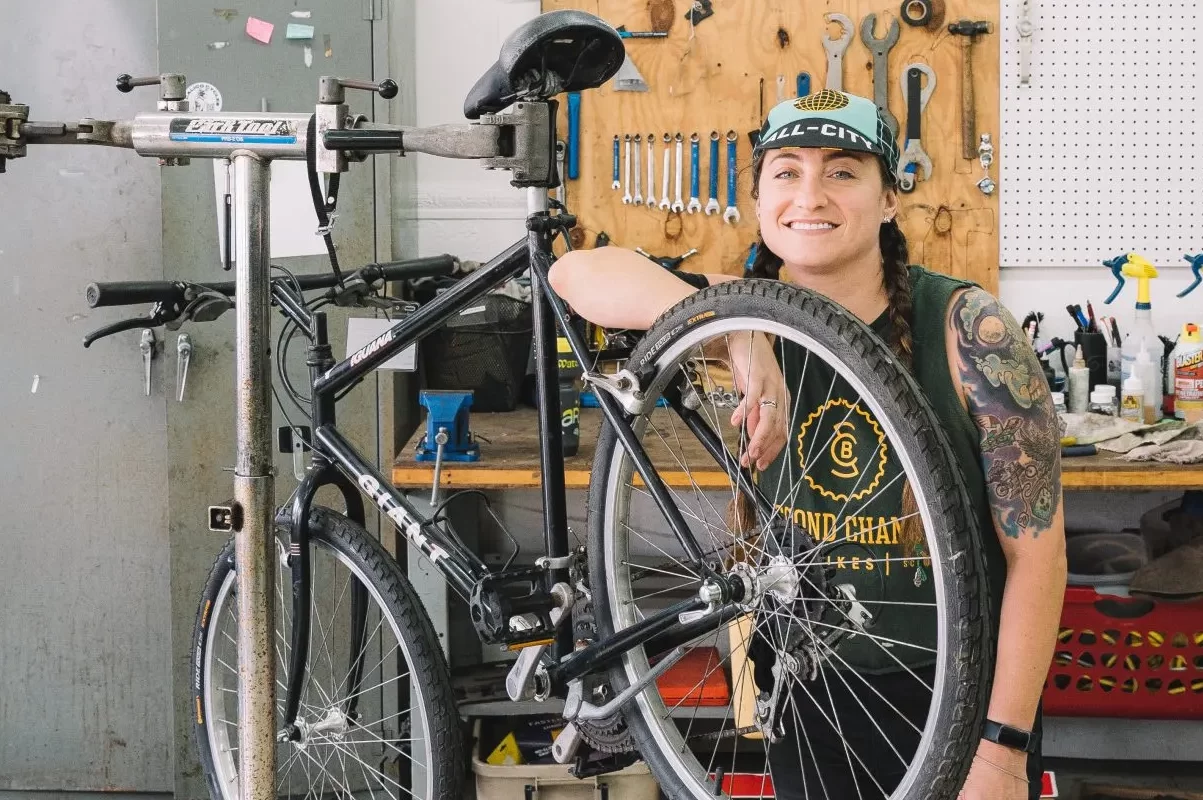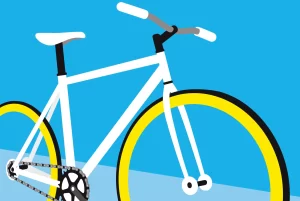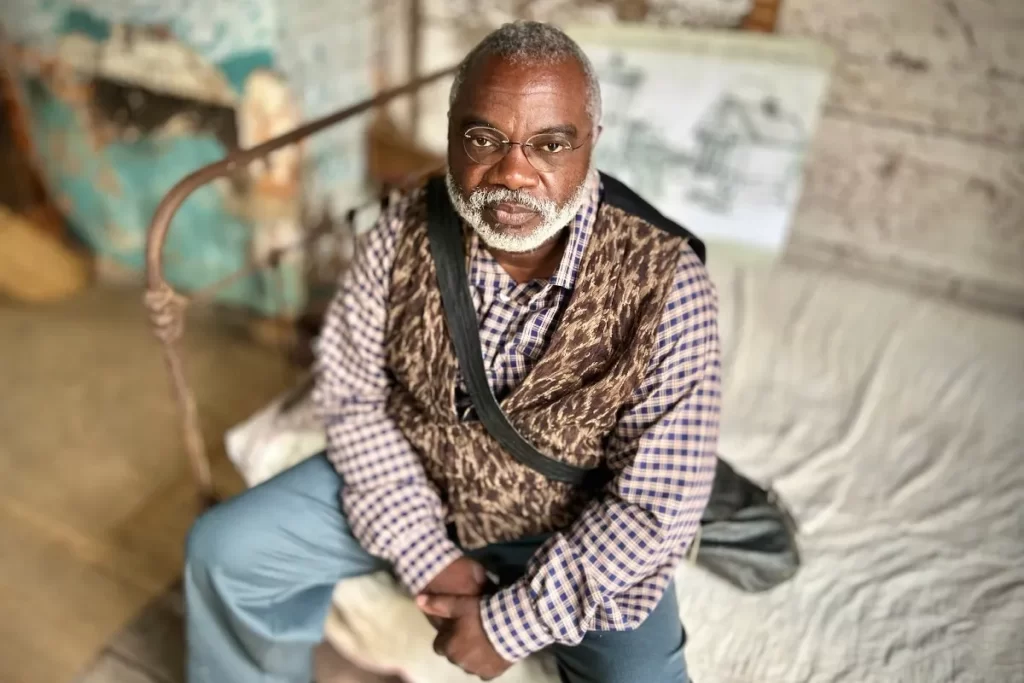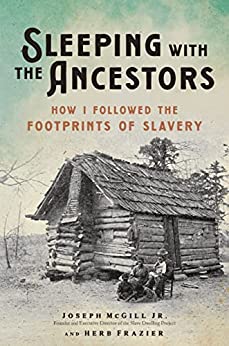STATEHOUSE REPORT | ISSUE 22.23 | June 9, 2023
BIG STORY: Cyclists push for better biking infrastructure, more safety
NEWS BRIEFS: Trump, aide indicted on 38 charges by federal grand jury
LOWCOUNTRY, Ariail: The folly of beach renourishment
COMMENTARY, Brack: “Sleeping with the Ancestors” is important book for S.C.
MYSTERY PHOTO: Brick building
FEEDBACK: Send us your thoughts
Cyclists push for better biking infrastructure, more safety

By Samantha Connors | Every time you see a white-painted bike on the side of the road, you might want to take a moment to remember the person who died there.
There are too many of those white remembrances, representing how South Carolina is the second riskiest state in which to ride a bike, according to a 2021 study by Streetlight Data. In 2020, South Carolina had the second-highest pedestrian fatality rate per 100,000 people, according to the National Highway Traffic Safety Administration.
As a relatively small city with year-round moderate weather, Charleston should be an ideal place for cyclists and pedestrians. But the reality is bleak.
“Charleston County is consistently the most dangerous in the state for bike/ped users, and the tri-county area tends to be towards the top,” said Katie Zimmerman, executive director of Charleston Moves, a nonprofit advocating for more mobility access.
The state Department of Public Safety collects figures from law enforcement agencies on bike and pedestrian collisions. The 2021 data show that of 433 bike collisions reported statewide, 171 happened in Berkeley, Charleston and Dorchester counties — representing nearly 40% of all collisions in the state.
“The main issue is our infrastructure is not designed in a way that is complete. Our streets and bridges … really prioritize vehicles and encourage speeding, frankly, over human beings,” Zimmerman said. “Because of that, we have a lot of interactions on a daily basis that are really dangerous because you’ve got these different types of users, some more vulnerable than others, who are using this infrastructure that does not work properly for multiple modes [of transport].”
A first for South Carolina

At a state level, SCDOT produced in 2022 the state’s first Pedestrian and Bicycle Safety Action Plan. Over the last several years, SCDOT has also conducted road safety audits, which Mathis said have resulted in recommendations for improvements, including a possible two-way cycle track downtown in Charleston on St. Philip Street from Calhoun to Beaufain streets.
Though local and state governments are making efforts to support multiple modes of transportation, many cyclists and advocates say comprehensive infrastructure is needed in addition to non-infrastructure improvements.
“I think one of the biggest failures of SCDOT and municipal governments here is that they don’t take care of the existing bike lanes, and people are using them,” said Sylvie Baele, executive director of Second Chance Bikes in North Charleston. “Probably more people would use them if they weren’t covered in debris and sand. … That’s something I would really like to see in tandem with more infrastructure.”
Other riders advocate for more widespread cycling education from sources including the Department of Motor Vehicles, city and county outreach, advocacy organizations and more.
“I think driver training and testing is a glaring omission,” said Phil Whirley, treasurer of Coastal Cycling club. “There is very little discussion of what to do with cyclists and pedestrians on the road. There’s a little bit, but not very much at all.”
Baele echoed these sentiments: “I think [cycling and pedestrian safety] needs more focus on the driving exam. … The DMV would be a good place to educate people.”
More education could help alleviate confusion drivers may feel about how to act near cyclists or pedestrians. Advocates say greater understanding and communication as well as more people riding could improve tension between cyclists and drivers.
Poor relationship
A new study from a law firm ranked South Carolina as the state with the 6th worst relationship between riders and drivers.
“I tell people … the most powerful thing they can do is ride a bike. If you want to make a difference, be the difference. Be out there on your bicycle,” Whirley said.
Baele added, “There’s really something about being in a metal box that makes it harder to view other people as human. It’s a lot harder to feel empathy for someone when you are in a vehicle and they are on a bike, despite the fact that you are in the position of power.”
Founder and CEO of national organization Equitable Cities Charles Brown said it’s essential to include marginalized groups in discussions of new bike infrastructure. “Black and brown communities, low income communities historically are not actively engaged in those processes,” he said.
“Local governments can do a better job by way of outreach and engagement to those communities to mitigate fears around infrastructure.”
Brown also pointed out that in “before” and “after” renderings of proposed new infrastructure, Black people are often missing from the “after” renderings.
“What is happening, intentionally or not, engineers and planners are sending a signal to Black and brown communities that you will not be present once that infrastructure comes,” he said.
Recognition of and opposition to this kind of disenfranchisement is an essential part of creating more equitable bike infrastructure everyone can enjoy. But increasing bike equity involves not only access to infrastructure but also bikes and safety accessories.
Samantha Connors is managing editor of the Charleston City Paper, where a version of this story first appeared. Have a comment? Send to: feedback@charlestoncitypaper.com
Trump, aide indicted on 38 charges by federal grand jury

The U.S. Justice Department on Friday unveiled a 38-count criminal indictment against former President Donald Trump and an aide. Among the charges issued on Thursday by a Miami federal grand jury are, according to The New York Times:
- 31 counts against Trump with each count being related to a document he was alleged to have had in his possession after his term of office as president.
- 5 counts against Trump and aide Walt Nauta related to concealing possession of classified documents, including counts of conspiracy to to obstruct justice and withhold documents.
- 2 counts of false statements to the FBI by Trump and the aide. Read the indictment.
Trump, the first former U.S. president to face federal charges, is expected to turn himself into Miami authorities on Tuesday. Republicans in Congress are denouncing the indictment. Republican rivals for the GOP presidential nomination in 2024 are feeling pressure to defend him. Despite the charges, however, Trump can still be a viable GOP candidate for the 2024 presidential election, according to a New York law professor.
In other recent headlines:
![]() S.C. General Assembly reaches budget deal after tense meeting. South Carolina House members and senators reached an agreement on the state’s $13 billion budget Thursday, just under 24 hours after a tense meeting where both sides seemed to be out of patience with each other.
S.C. General Assembly reaches budget deal after tense meeting. South Carolina House members and senators reached an agreement on the state’s $13 billion budget Thursday, just under 24 hours after a tense meeting where both sides seemed to be out of patience with each other.
S.C. Supreme Court accepts challenge to state’s 6-week abortion ban. South Carolina’s highest court will directly take up a legal challenge to the state’s latest six-week abortion ban less than six months after tossing out the last one.
U.S. Supreme Court gives voting rights law new lease on life. The main remaining power of the landmark 1965 law over racial bias in political mapmaking gets an unexpected reinforcement from the U.S. high court that had been weakening the law for years.
Statehouse bond reform, gun penalties remain hung up. State legislators still have not been able to get a bail bond reform bill or a bill to make it illegal for felons to carry firearms to the governor’s desk as the Legislature’s special session runs into its second month.
S.C. now has 66% more mental health counselors in schools since last year. South Carolina has gone from more than half of its schools lacking access to mental health counselors to 80% of them now having that access in the last year, according to a new report.
Fentanyl traffickers to get longer sentences. A new bill passed by the S.C. House threatens up to 25 years in prison for a first conviction of trafficking less than 14 grams of fentanyl, while a second conviction comes with a mandatory 25-year sentence. Punishment escalates up to 40 years for people caught with more than 28 grams.
- Have a comment? Send to: feedback@charlestoncitypaper.com
The folly of beach renourishment

Cartoonist Robert Ariail always has interesting takes on issues, such as beach renourishment this week. Love the cartoon? Hate it? What do you think: feedback@statehousereport.com.
“Sleeping with the Ancestors” is important book for S.C.

By Andy Brack, editor and publisher | About 25 years ago, I ambled along the Yarra River in an urban park in Melbourne, Australia. It wasn’t a big deal until I realized I had absolutely no idea what was around me and what dangers lurked.
 Instead of oaks and pines of the Southern coast, there were gray-green eucalyptus trees. I didn’t know much about Australia’s bugs or animals, although I knew it was a good idea to avoid any snakes. Birds sang, but I didn’t recognize their songs or what they were.
Instead of oaks and pines of the Southern coast, there were gray-green eucalyptus trees. I didn’t know much about Australia’s bugs or animals, although I knew it was a good idea to avoid any snakes. Birds sang, but I didn’t recognize their songs or what they were.
A two-hour walk from the suburbs to the city center along a river became an unexpected jaunt of looking over a shoulder here, speeding up there. It was a little creepy.
So imagine the harrowing experience of 12 million Africans uprooted from their homes and shackled by slavers into cramped, nasty boats for the two-month Transatlantic passage to the Americas. Almost 2 million died. Those who made it here to work on plantations to generate wealth for white settlers often lived in small shacks with no furniture to speak of and pallets or hammocks for beds.
And imagine the sounds they heard – shrieks of different birds, croaking of alligators, buzzing of mosquitoes and skittering of rodents. Ripped from their homeland into a life of slavery, their plight is almost unimaginable.
Except to Joe McGill, a Kingstree native and former park ranger who has spent the last few years sleeping in some of the remaining structures where enslaved Africans lived. Since he started the Slave Dwelling Project in 2010, he’s slept in more than 200 structures across 25 states.
 “Some had suggested that my experience would be like staying in a haunted house, but it wasn’t unpleasant at all,” he recalled in “Sleeping with the Ancestors,” a new book written by him and journalist Herb Frazier. “Hearing my own breath, I could imagine the men, women and children who had lived in the cabin [at Charleston’s Magnolia Plantation] during the decades of Jim Crow, when the opportunities of Reconstruction were pulled away from Black people. …
“Some had suggested that my experience would be like staying in a haunted house, but it wasn’t unpleasant at all,” he recalled in “Sleeping with the Ancestors,” a new book written by him and journalist Herb Frazier. “Hearing my own breath, I could imagine the men, women and children who had lived in the cabin [at Charleston’s Magnolia Plantation] during the decades of Jim Crow, when the opportunities of Reconstruction were pulled away from Black people. …
“I couldn’t sleep. Admittedly, it was a little spooky being alone in a former slave cabin and uncomfortable physically and psychologically. That night, I pondered what drove me to do such an odd thing. The ancestors!”
The point of sleeping in old cabins and dwellings where enslaved Africans once lived was to connect with the past in ways that haven’t made it into history books.
“My simple act of sleeping where enslaved people slept has broadened my awareness of their history, but it cannot replicate the pain and suffering they endured,” McGill wrote. “I hope that my travels have brought attention to the need for a deeper study and understanding of this history.”
For McGill, sleeping with the ancestors is no theoretical endeavor. It’s the opposite of the politically-charged, conservative talking points about so-called “critical race theory” that is upending our real history with vanilla-flavored versions of what happened.
McGill’s nightly encounters with hard floors, loud nature and dark skies seeped into his soul and informed him about how millions of people lived in the American South for more than three centuries.
He’s to be commended for broadening the way people think about history in the South, not branded as someone with a “woke agenda,” the popular current conservative term for people who want to avoid the reality of teaching a truthful, inclusive history to today’s children.
“I refuse to go back to that place where the youth of America are taught that enslavers were benevolent and enslaved people were happy,” he wrote in the book’s conclusion. “I’ve probably got more sleepovers behind me than I have ahead of me, but as long as I have a voice, I will continue to advocate for and love on the enslaved ancestors and tell their stories truthfully and respectfully.”
Good. “Sleeping with the Ancestors: How I followed the Footprints of Slavery” is available for $29.00 through Hachette Press.
Andy Brack is editor and publisher of Statehouse Report and the Charleston City Paper. Have a comment? Send to: feedback@statehousereport.com.
Brick building

This is a pretty old South Carolina building and we’re not even sure it’s standing any more. (But we bet it is.) What is it and where is it? Send us your guess – as well as your name and hometown – to feedback@statehousereport.com.
 Last week’s mystery, “Industrial scene,” showed the Sampit River harbor in Georgetown, S.C. According to Allan Peel of San Antonio, Texas, the port of Georgetown “was established in 1732 by the British Crown, and quickly became a major center for the export of deer skins, indigo, rice and lumber products to England. In the early 1800s, the port also became a major center for the slave trade. After the Civil War, the port declined in importance.” There are hopes these days that it will be revitalized.
Last week’s mystery, “Industrial scene,” showed the Sampit River harbor in Georgetown, S.C. According to Allan Peel of San Antonio, Texas, the port of Georgetown “was established in 1732 by the British Crown, and quickly became a major center for the export of deer skins, indigo, rice and lumber products to England. In the early 1800s, the port also became a major center for the slave trade. After the Civil War, the port declined in importance.” There are hopes these days that it will be revitalized.
Others who identified the photo were: John Hart, Jay Altman and Elizabeth Jones , all of Columbia; George Graf of Palmyra, Virginia; Charles Ford and Dean Adams, both of Georgetown; Frank Bouknight of Summerville; Will Williams of Aiken; Gwen Strickland of Marion; and Terry Jones; and Kate Sellers.
>> Send us a mystery picture. If you have a photo that you believe will stump readers, send it along (but make sure to tell us what it is because it may stump us too!) Send to: feedback@statehousereport.com and mark it as a photo submission. Thanks.
Send us your thoughts
We encourage you to send in your thoughts about policy and politics impacting South Carolina. We’ve gotten some letters in the last few weeks – some positive, others nasty. We print non-defamatory comments, but unless you provide your contact information – name and hometown, plus a phone number used only by us for verification – we can’t publish your thoughts.
- Have a comment? Send your letters or comments to: feedback@statehousereport.com. Make sure to provide your contact details (name, hometown and phone number for verification. Letters are limited to 150 words.
- ORDER NOW: Copies are in Lowcountry-area bookstores now, but if you can’t swing by, you can order a copy online today.
- Now available as an e-book!
ABOUT STATEHOUSE REPORT
Statehouse Report, founded in 2001 as a weekly legislative forecast that informs readers about what is going to happen in South Carolina politics and policy, is provided to you at no charge every Friday.
- Editor and publisher: Andy Brack, 843.670.3996
Donate today
We’re proud to offer Statehouse Report for free. For more than a dozen years, we’ve been the go-to place for insightful independent policy and political news and views in the Palmetto State. And we love it as much as you do.
But now, we can use your help. If you’ve been thinking of contributing to Statehouse Report over the years, now would be a great time to contribute as we deal with the crisis. In advance, thank you.
Buy the book
Now you can get a copy of editor and publisher Andy Brack’s We Can Do Better, South Carolina! ($14.99) as a paperback or as a Kindle book ($7.99). . The book of essays offers incisive commentaries by editor and publisher Andy Brack on the American South, the common good, vexing problems for the Palmetto State and interesting South Carolina leaders.
More
- Mailing address: Send inquiries by mail to: P.O. Box 21942, Charleston, SC 29413
- Subscriptions are free: Click to subscribe.
- We hope you’ll keep receiving the great news and information from Statehouse Report, but if you need to unsubscribe, go to the bottom of the weekly email issue and follow the instructions.
- Read our sister publication: Charleston City Paper (every Friday in print; Every day online)
- © 2023, Statehouse Report, a publication of City Paper Publishing, LLC. All rights reserved.
















 We Can Do Better, South Carolina!
We Can Do Better, South Carolina!
Good, interesting column